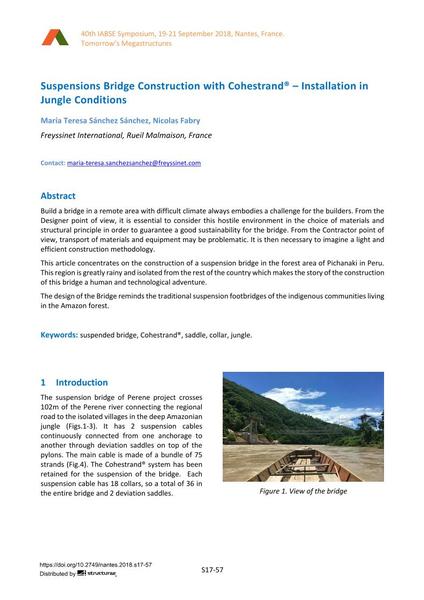Suspensions Bridge Construction with Cohestrand® – Installation in Jungle Conditions

|
|
|||||||||||
Bibliographic Details
| Author(s): |
María Teresa Sánchez Sánchez
(Freyssinet International, Rueil Malmaison, France)
Nicolas Fabry (Freyssinet International, Rueil Malmaison, France) |
||||
|---|---|---|---|---|---|
| Medium: | conference paper | ||||
| Language(s): | English | ||||
| Conference: | IABSE Symposium: Tomorrow’s Megastructures, Nantes, France, 19-21 September 2018 | ||||
| Published in: | IABSE Symposium Nantes 2018 | ||||
|
|||||
| Page(s): | S17-57 | ||||
| Total no. of pages: | 7 | ||||
| DOI: | 10.2749/nantes.2018.s17-57 | ||||
| Abstract: |
Build a bridge in a remote area with difficult climate always embodies a challenge for the builders. From the Designer point of view, it is essential to consider this hostile environment in the choice of materials and structural principle in order to guarantee a good sustainability for the bridge. From the Contractor point of view, transport of materials and equipment may be problematic. It is then necessary to imagine a light and efficient construction methodology. This article concentrates on the construction of a suspension bridge in the forest area of Pichanaki in Peru. This region is greatly rainy and isolated from the rest of the country which makes the story of the construction of this bridge a human and technological adventure. The design of the Bridge reminds the traditional suspension footbridges of the indigenous communities living in the Amazon forest. |
||||
| Keywords: |
jungle suspended bridge saddle Cohestrand® collar
|
||||

